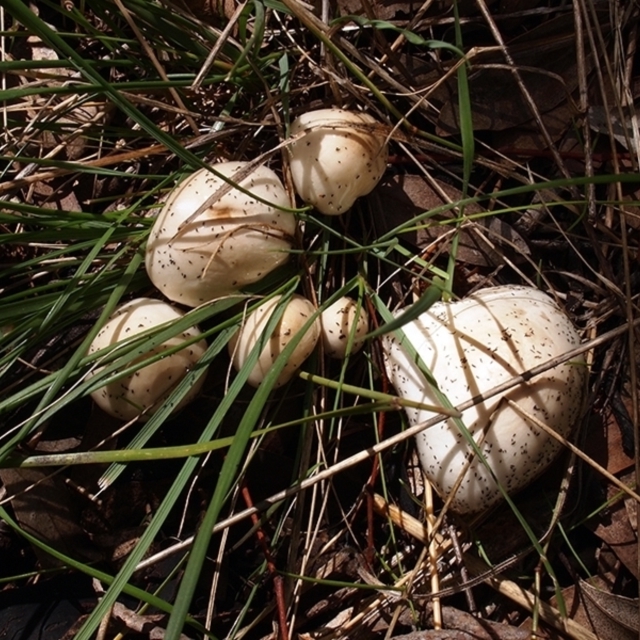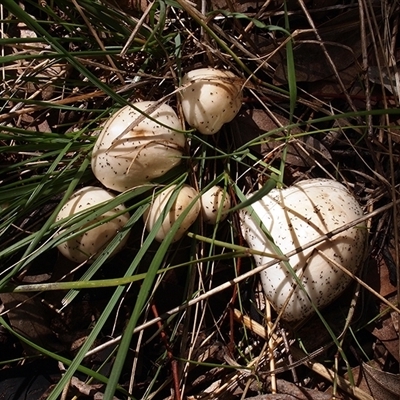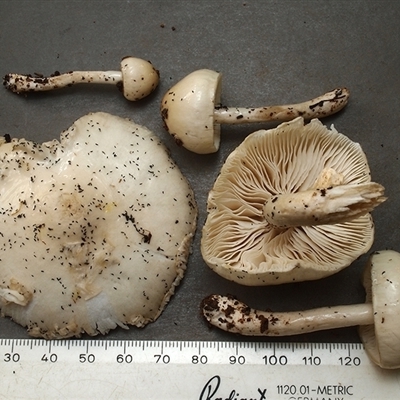Limacella pitereka
The fruitbody is a mushroom with a cap atop a central stem. The cap is up to 6 centimetres in diameter, initially somewhat conical and with age becomes shallowly convex or flat, but may keep a slight central hump (or umbo). It is mostly white but pale brown at the centre. The gills are white. The stem may be up to 8 centimetres long and a centimetre or so wide. It is white and may have brown tints.
The fresh mushroom has a very slimy coating over both cap and stem and a slimy 'partial veil' is present (but see the final paragraph below). In dry weather this slimy coating may disappear. The mushroom is somewhat fragile. A cap may break from the stem, making you think you have weakened, grub-chewed mushroom - yet there are no grubs. Hence collecting specimens demands some care.
Spore print: white.
The species is found growing on the ground, was first described by Cheryl Grgurinovic (see below) and is known from Australia and New Zealand.
Look-alikes
Limacella illinita, long known from the northern hemisphere, is visually similar and there have been a few reports of this from Australia but definite proof is still needed. If we exclude that species, Limacella pitereka should be unmistakeable - IF you see it in its full slimy glory (especially if the 'partial veil' is present). In dry conditions this species becomes fairly nondescript and might then be hard to identify from a photograph.
References
Grgurinovic, C. (1997), Larger Fungi of South Australia, Botanic Gardens of Adelaide & The Flora and Fauna of South Australia Handbooks Committee, Adelaide.
Rod Tullos gives detailed information about the genus Limacella here: http://www.amanitaceae.org/?About%20Limacella.
Tulloss makes the following comment: With regard to the “slimy partial veil” seen in some species of Limacella, this structure is thought to be a remnant of the development of the universal veil. Since the young cap has its edges curled under (putting part of the cap surface near to the surface of the developing stipe) some hyphae form wispy (spiderweb-like or cortina-like) connections between the cap and the stipe. These hyphae gelatinize and create a slimy partial-veil-like structure that will include some hyphae. When the cap unfurls and breaks the tenuous connection with the stipe, small tufts of broken hyphae covered with slime may be left encircling a narrow region on the upper stipe. The resulting ring of material looks like a partial veil in Amanita and may be protective of the maturing lamellae for a short time; but its origin and development differ from the origin and development of the partial veil in the schizohymenial genus Amanita.
Limacella pitereka is listed in the following regions:
Canberra & Southern Tablelands
Species information
- Limacella pitereka Scientific name
- Common name
- Not Sensitive
- Local native
- Non-invasive or negligible
- Machine learning








